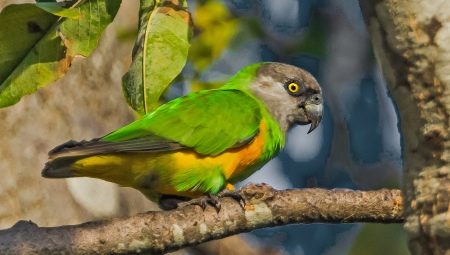The Senegalese long-winged parrot is a beautiful, bright, friendly and quick-witted representative of birds. As a rule, you quickly get used to any pet, and each owner wants his friend to live as long as possible. The Senegalese parrot can live at home for several decades. In order to maximize the life of the bird, its owner must comply with some maintenance rules.
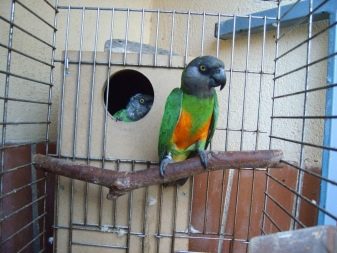
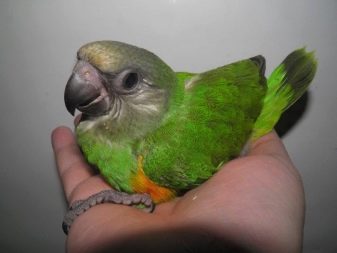
Features
This parrot is an exotic pet native to the western part of the African continent. The length of his body reaches 25 cm, and weight - 170 g. The body of the parrot is strong, and the tail is short and wide. Most often, green individuals are found, only the lower abdomen can have a yellowish or orange plumage. The head is usually large, dark gray.
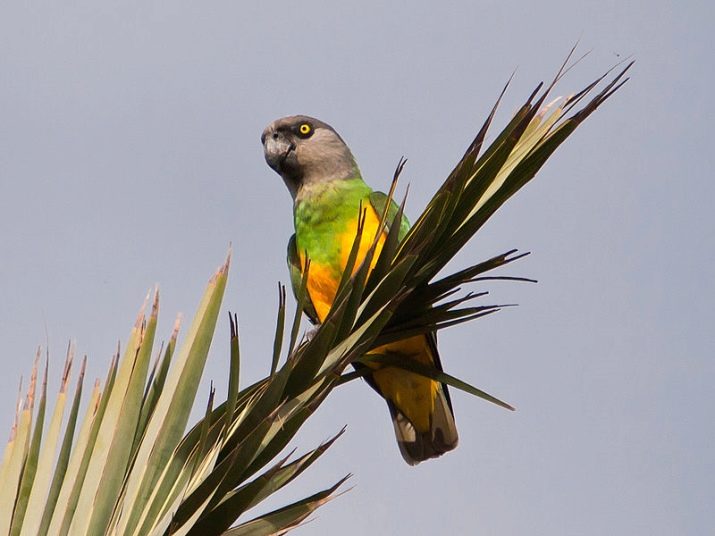
Chicks are faded. Males are larger than females, they have a wide flat head and brighter eyebrows.
If gender is difficult to determine, then the owners conduct a DNA test.
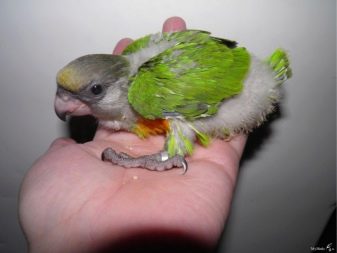
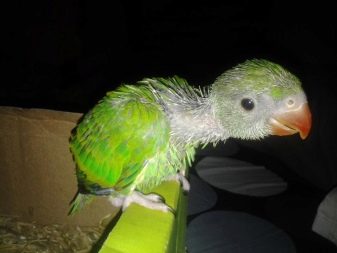
The advantage of this pet is a quick adaptation to a change of scenery and getting used to the owner. The breed belongs to the speaking species, but the Senegalese parrot cannot boast a large vocabulary of words. However, it is easy to train and can perform some circus tricks. On average, these parrots live 20-30 years, but there are real centenarians who have lived up to 40 years.
Ornithologists classify the Senegalese breed into three subspecies.
- Senegalus. Nominal subspecies. Individuals have a yellow belly.
- Mesotypus. It is characterized by a more delicate color, orange feathers in the abdomen are more pronounced.
- Versteri. These birds have a darker shade, their belly is red-orange in color.
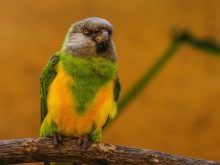
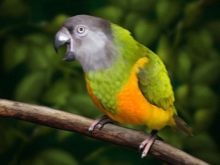
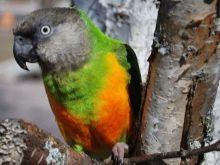
Conditions of detention
To make the acquired bird feel comfortable, The owner is required to familiarize themselves with the basic content rules.
- Parrot sleep should last about 10 hours a day, so the optimal daylight hours for a feathered pet should be 14 hours. In summer, there is enough natural light, and in winter, it is necessary to use artificial lamps. In this case, even a regular table lamp is suitable.
- In the room where the parrot is kept, the temperature should always be in the range of 18 to 30 degrees Celsius. Sudden changes in temperature, drafts and low humidity are dangerous for the animal.
- The minimum cell size is 80x90x80 cm. Experts recommend buying square-shaped cells. It is worth paying attention to how securely the cell is locked. Senegalese parrots are very smart birds and can easily open the door with their beak if it is locked with simple hooks and latches.
- Typically, feeders are already equipped in a purchased cage, so there is no need to purchase them separately. However, you need to adapt a small container for small pebbles, with which the bird will grind food. When choosing a drinker, it is better to give preference to metal or wooden products, since plastic options quickly deteriorate.
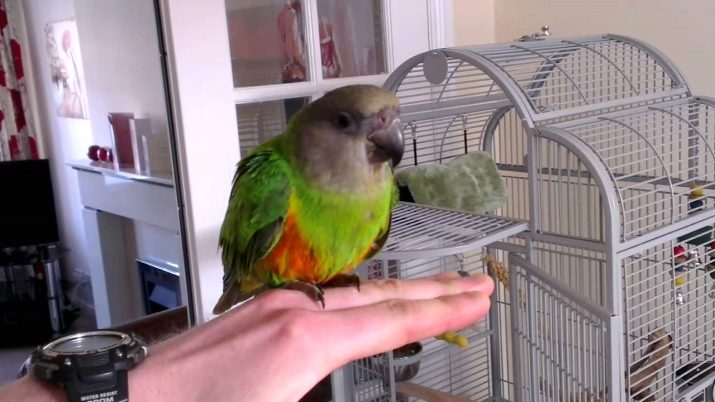
According to the reviews of the owners, it is more convenient to use drinking bowls with a flat top bottom - they are more convenient to put on the table when changing the water.
It is also recommended to additionally secure the drinker with wire so that the parrot could not disconnect and drop it.
Senegalese people like to take a bath, so it is necessary to put a metal container with warm water in the cage. It is necessary to install the bath so that the feathered tenant could not overturn it.
When choosing attributes for a cage, special attention should be given to poles and toys. The poles should have a diameter convenient for the parrot. It is better to abandon thin products and perches made of soft wood. No need to install too many poles, as the bird will have nowhere to turn around in the cage.
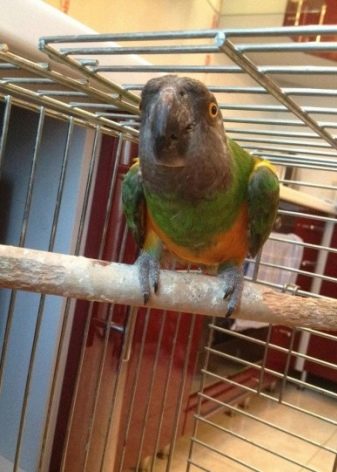

Of the toys, the most necessary are swings, mirrors, rattles and bells. It is necessary to select such products that will be convenient for the parrot by weight.
Do not forget about snap cages mineral stone, which is necessary for the grinding of claws and beak. Also, instead of stone, twigs and tree bark are suitable.
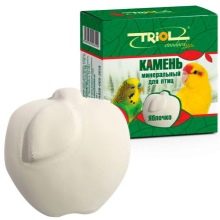

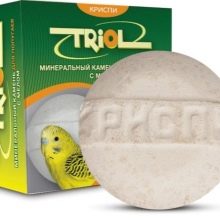
Care
When choosing a feathered pet, it is worth giving preference to young individuals up to 6 months, as they are easier to tame. Senegal easily distinguishes people and quickly becomes attached to its owner. In addition, they are jealous animals, so it is better not to settle Senegal with other breeds of birds. Despite the small vocabulary, the Senegalese parrot pronounces the phrases quite clearly and clearly, it conveys the speaker’s emotions and intonation well.
Particular attention when keeping a parrot is paid to its feeding. These birds can not eat protein food, so you should not offer your pet eggs, bread, cheese. Also, do not abuse nuts - from them the parrot can grow stout, which will lead to serious health problems. You need to buy specialized feed for medium-sized parrots - usually all the substances necessary for the full development of birds are balanced in them. Often foods include millet, oats, canary seed, vitamins A, D, E, and Group B.
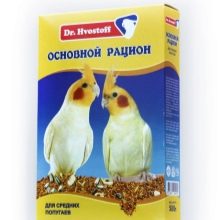
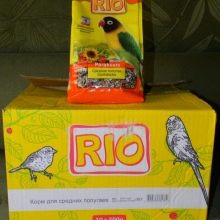
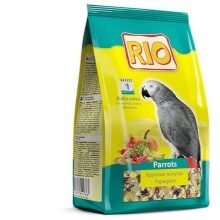
You also need to add vegetables, fruits, berries to the parrot menu, systematically offer weed and twigs, birch sap. In nature, individuals like to enjoy flowers, but at home it is worthwhile to beware of such dressing, as many indoor flowers are poisonous to animals. At least once a day, it is necessary to change the water to the parrot, and it is better to pour fresh water every time when pieces of food get into the drinker. The water temperature should be approximately 20 degrees heat. In hot weather, you should not give your feathered friend cold water so as not to provoke a cold in a parrot.
Parrots need vitamins - they can also be purchased at a pet store, but it is best to consult your veterinarian in advance. Vitamins are added to food or water. To maintain health, you need to purchase special ultraviolet lamps. Among artificial lamps, heating equipment is of particular importance.
If you could not find a special lamp for birds, then you can warm Senegal under a conventional incandescent lamp, but do not place the lamp closer than 50 cm. It is especially important to warm the parrot during a period of illness and stress, for example, when moving.
Every day the parrot needs a walk. It is necessary to let him out at least briefly from the cage. Let him spread his wings and fly around the room.
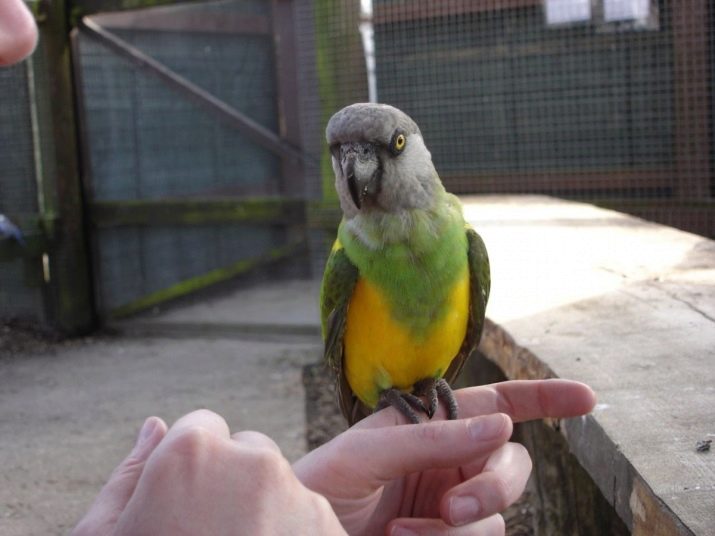
To protect the furniture from bird droppings, you can place your favorite pet toys and perches in the corner of the room - then cleaning will be required in only one corner. There is no need to let a parrot just brought into the house until he gets used to the new owner and the change of scenery.
Breeding
Reproduction of individuals is possible when they reach two years of age. In order for the female to lay eggs, it is necessary to hang a nest box of 45x20x25 cm in the cage. The entrance to the nest should be about 2.5 cm in size.
During the mating season in nature, the male dances a dance in front of his lady of the heart, demonstrates singing skills, spreads wings behind his back and shows feathers on the back of his head. The female can not resist such a persistent partner. Usually a girl parrot lays 3-5 eggs, which hatch for 22-24 days. At this time, the future father protects his family, brings food to his beloved.
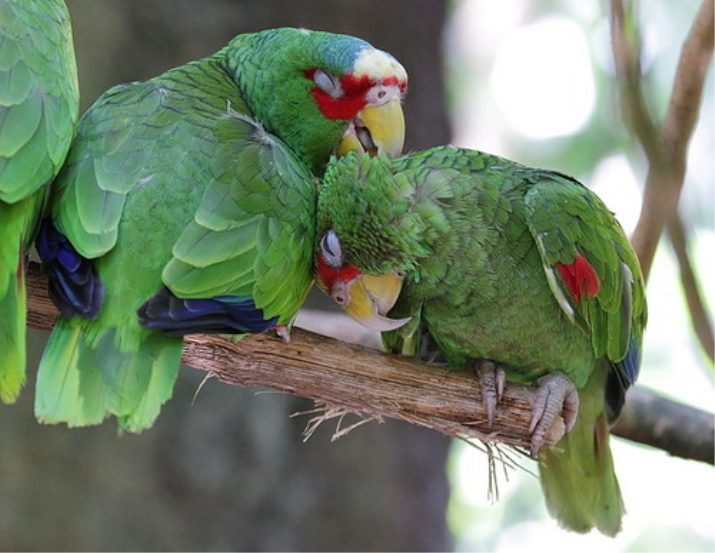
If it so happened that the chicks were left without parents, then the owner takes them for artificial feeding. Before the plumage of babies, the nesting temperature should be 33 degrees heat, and the temperature of the fodder mass should be 39 degrees. To achieve heat in the nest, you can put it on a heating pad, but it is important to periodically control the temperature - a few minutes of overheating can lead to the death of the chicks. Sometimes it’s worth spraying the nesting place with clean water to maintain humidity in the bird's house.
In the first week of life, small Senegalese are fed with baby food (without milk), which is bred to a state of liquid puree. You can supplement the substance with apple and carrot juice or grind a piece of boiled yolk. On their own, the chicks begin to eat at about 3-3.5 months.
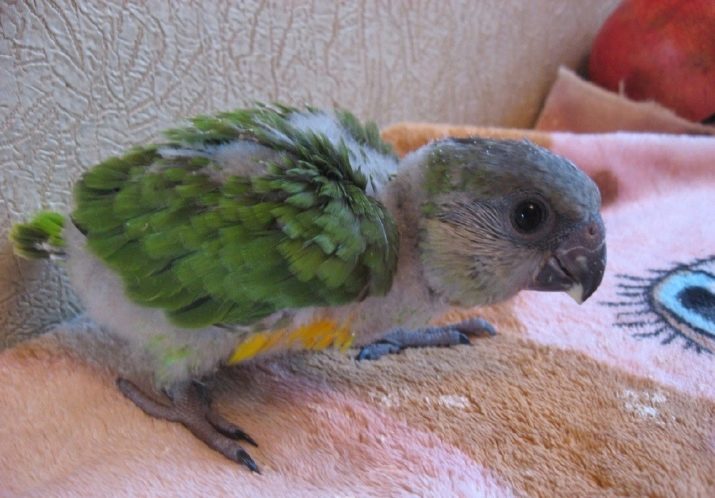
Reviews
Owners of Senegalese parrots speak well of their pets. With proper care and a trusting relationship with the owner, parrots are able to perform acrobatic numbers, for example, ride a miniature bike. For breeding, few owners decide, and those who tried to feed the chick on their own are disappointed with the complexity of this process. Unfortunately, artificial feeding at home in inexperienced owners rarely ends in success.
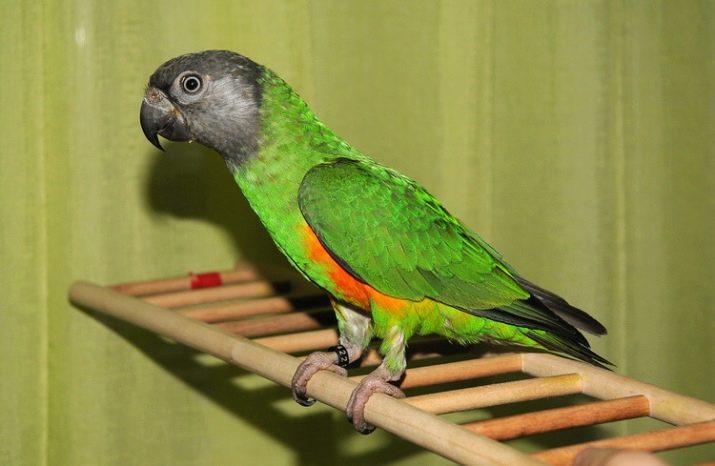
All about Senegalese parrots see in the next video.
